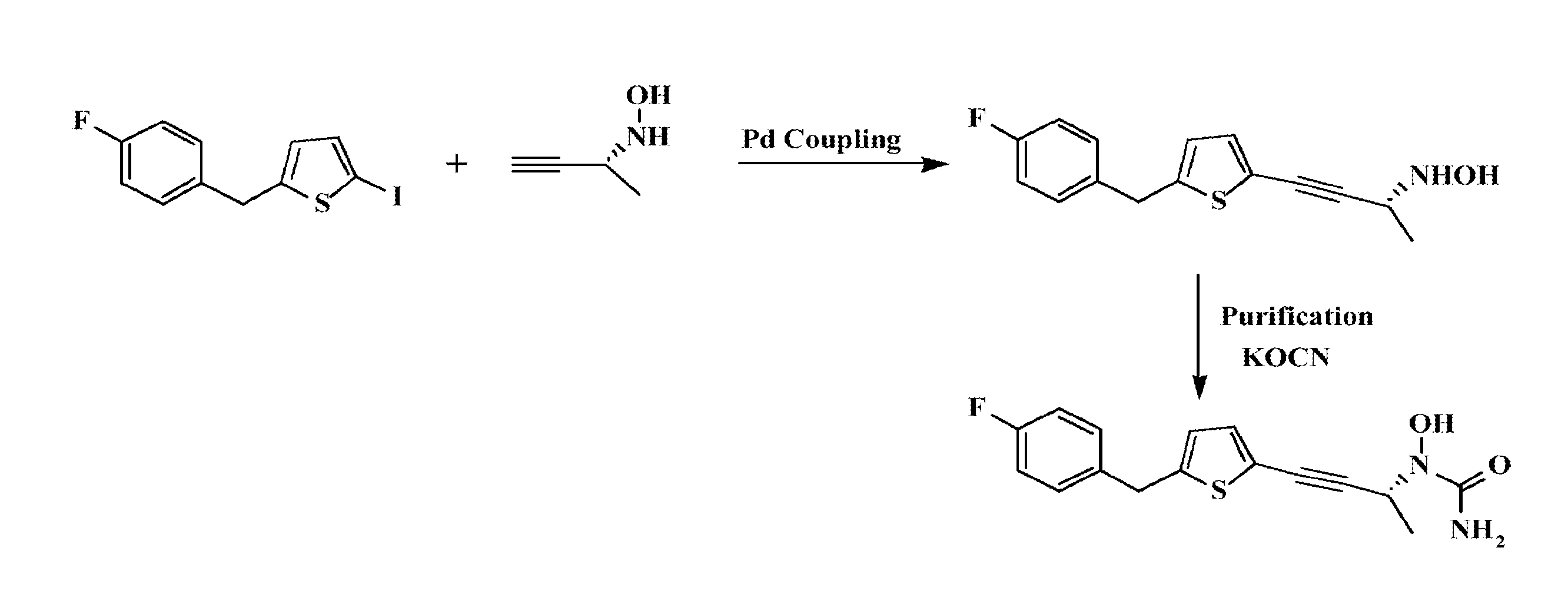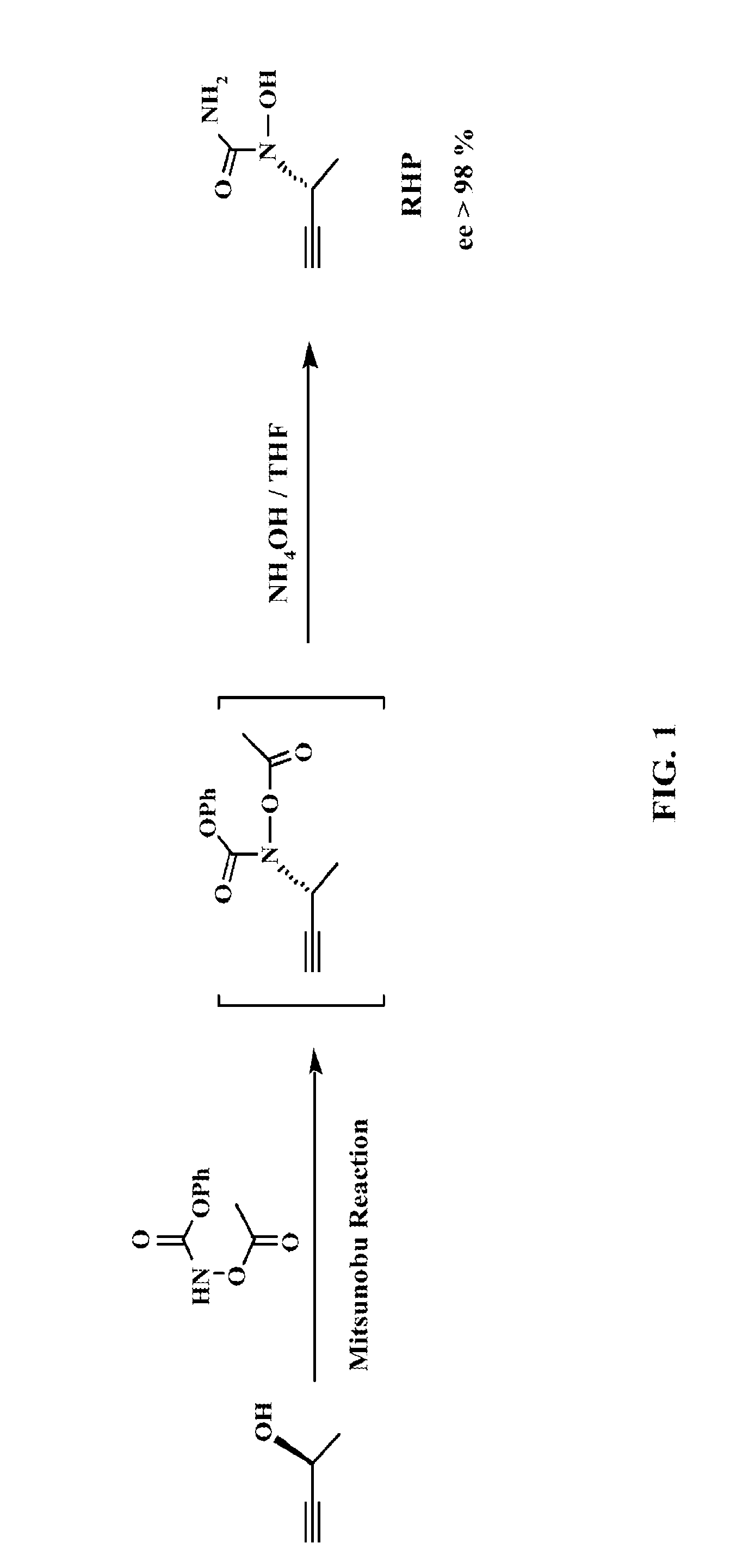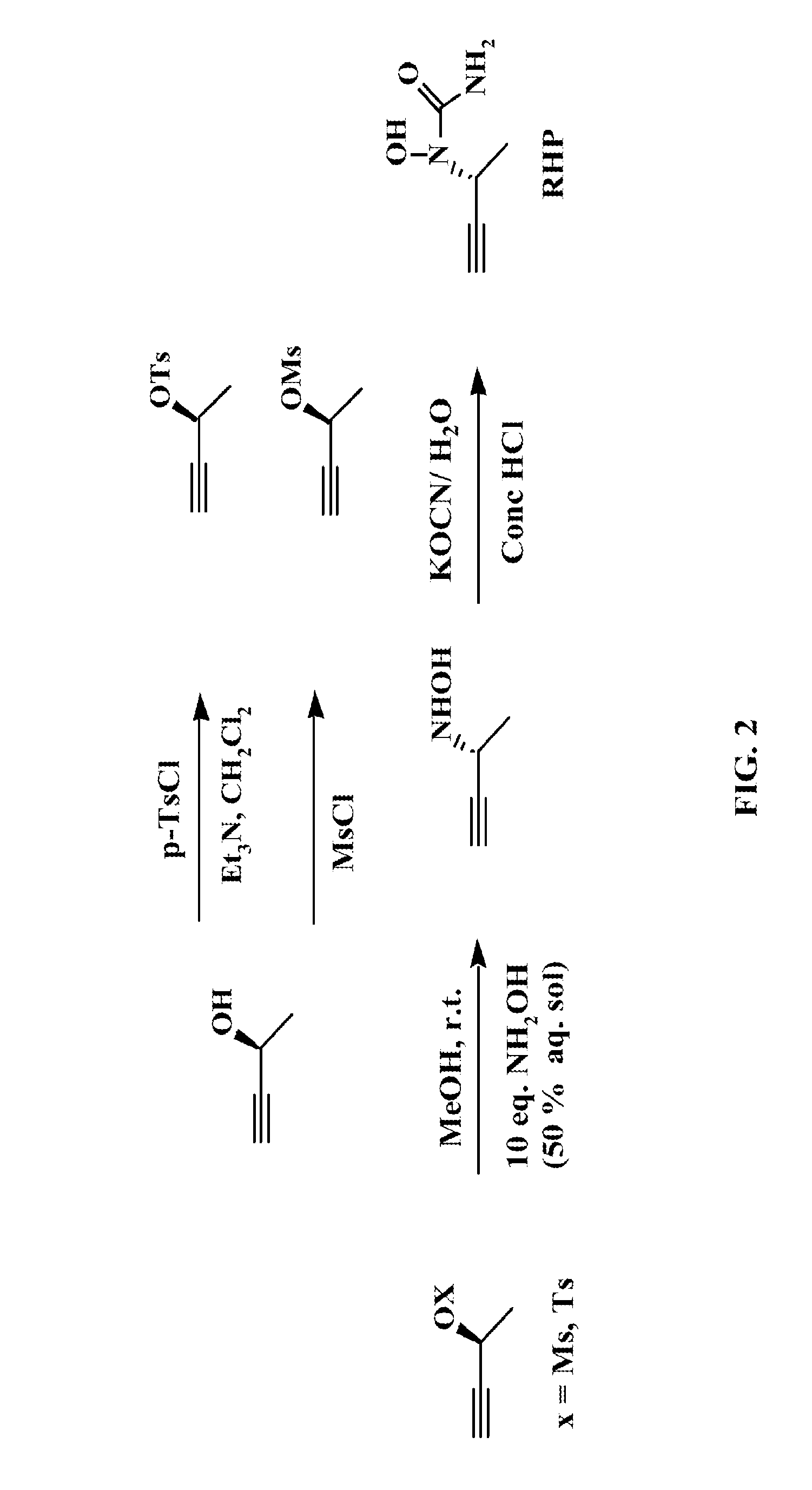Phenylalkyl n-hydroxyureas for treating leukotriene related pathologies
- Summary
- Abstract
- Description
- Claims
- Application Information
AI Technical Summary
Benefits of technology
Problems solved by technology
Method used
Image
Examples
example 1
Phase 2 Acute Coronary Syndrome (ACS) Study
[0063]This study demonstrated the efficacy of treatment with N-[3-[5-[(4-fluorophenyl)methyl]-2-thienyl]-1-methyl-2-propynyl]-N-hydroxyurea in reducing leukotriene production at 12 weeks after an ACS event in patients and provided supporting imaging data evidence that such a reduction in leukotriene production may influence atherosclerosis. In this randomized, placebo-controlled study, 191 patients were randomized 3 weeks after an acute coronary syndrome (ACS) to receive 25, 50, or 100 mg N-[3-[5-[(4-fluorophenyl)methyl]-2-thienyl]-1-methyl-2-propynyl]-N-hydroxyurea or placebo qd for 12 weeks. Baseline assessments were performed at the start of treatment and these baseline results were compared with repeat assessments during various follow-up periods during the treatment study. A subset of 93 patients who had undergone a Multidetector (64 slice coronary) Computerized Tomography (MDCT) examination at baseline continued on study medication fo...
example 2
Phase 2 Carotid Endarterectomy (CEA) Study
[0069]This study demonstrated the efficacy of treatment with N-[3-[5-[(4-fluorophenyl)methyl]-2-thienyl]-1-methyl-2-propynyl]-N-hydroxyurea in stabilizing cardiovascular disease and atherosclerotic plaque in male and female patients with carotid stenosis undergoing elective carotid endarterectomy (CEA) surgery. In this randomized, double blind, placebo-controlled study, 50 patients with significant carotid artery stenosis (60-90%) were treated once daily for 12 weeks with orally administered 100 mg N-[3-[5-[(4-fluorophenyl)methyl]-2-thienyl]-1-methyl-2-propynyl]-N-hydroxyurea or placebo prior to undergoing CEA, at which time endarterectomy tissue (plaque) was collected and stored for subsequent tissue analysis. Baseline assessments are performed at the start of treatment and these baseline results were compared with repeat assessments during various follow-up periods of treatment. The treatment was conducted for twelve weeks at which time th...
example 3
[0077]Capsules of N-[3-[5-[(4-fluorophenyl)methyl]-2-thienyl]-1-methyl-2-propynyl]-N-hydroxyurea were manufactured, by the following procedure.
[0078]N-[3-[5-[(4-fluorophenyl)methyl]-2-thienyl]-1-methyl-2-propynyl]-N-hydroxyurea capsules were manufactured in three strengths: 25 mg, 50 mg and 75 mg. These capsules were filled at three different fill weights of the 50% active formulation to achieve the three strengths. The ingredients and packaging components were identical for all three strengths.
[0079]N-[3-[5-[(4-fluorophenyl)methyl]-2-thienyl]-1-methyl-2-propynyl]-N-hydroxyurea capsules were manufactured using a common wet granulation made up of seven sub-batches, containing 50% N-[3-[5-[(4-fluorophenyl)methyl]-2-thienyl]-1-methyl-2-propynyl]-N-hydroxyurea, Lactose monohydrate, Pregelatinzed starch, Sodium Starch Glycolate, Povidone and USP water. The seven sub-batches were dried, milled and blended with crospovidone, glyceryl behenate, and magnesium stearate. The milled and blended...
PUM
 Login to View More
Login to View More Abstract
Description
Claims
Application Information
 Login to View More
Login to View More - R&D
- Intellectual Property
- Life Sciences
- Materials
- Tech Scout
- Unparalleled Data Quality
- Higher Quality Content
- 60% Fewer Hallucinations
Browse by: Latest US Patents, China's latest patents, Technical Efficacy Thesaurus, Application Domain, Technology Topic, Popular Technical Reports.
© 2025 PatSnap. All rights reserved.Legal|Privacy policy|Modern Slavery Act Transparency Statement|Sitemap|About US| Contact US: help@patsnap.com



